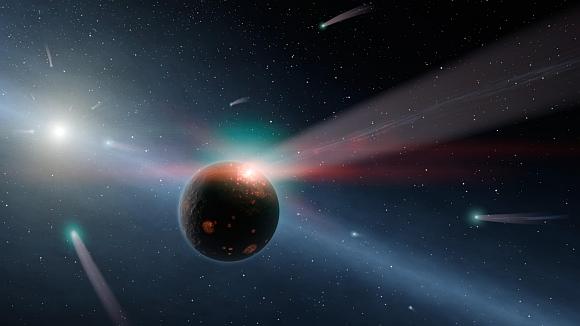Photographs: NASA
A monster solar storm of charged particles that erupted two days ago on Thursday hit the Earth, which could disrupt power grids, satellite navigation and flights.
The storm, which scientists claimed to be the largest in five years, was triggered by a pair of solar flares early Tuesday and is growing like a giant soap bubble.
"The coronal mass ejection (CME) associated with the R3 (Strong) Radio Blackout event from 0024 UTC March 7 (7:24 p.m. EST March 6) arrived at ACE at 1045 GMT today (15:15 IST)," National Oceanic and Atmospheric Administration (NOAA) said.
...
IN PHOTOS: Massive solar storm hits Earth
Photographs: NASA
"So far the orientation of the magnetic field has been opposite of what is needed to cause the strongest storming. As the event progresses, that field will continue to change," NOAA tweeted.
Earlier, Joseph Kunches, a space weather scientist at the NOAA said, "Space weather has gotten very interesting over the last 24 hours."
"This was quite the Super Tuesday -- you bet," Kunches was quoted as saying by SPACE.com.
...
IN PHOTOS: Massive solar storm hits Earth
Photographs: NASA
Several NASA spacecraft caught videos of the solar flare as it hurled a wave of solar plasma and charged particles, called a coronal mass ejection (CME), into space.
Early predictions estimate that the CME will reach Earth at 5pm (India time) today, with the effects likely lasting for 24 hours, and possibly lingering into Friday, Kunches said.
The solar eruptions occurred when the Sun let loose two huge X-class solar flares that ranked among the strongest type of Sun storms.
And the biggest of those flares registered as an "X5.4 class" solar storm on the space weather scale and the CME from this flare is the one that could disrupt satellite operations, Kunches said.




article